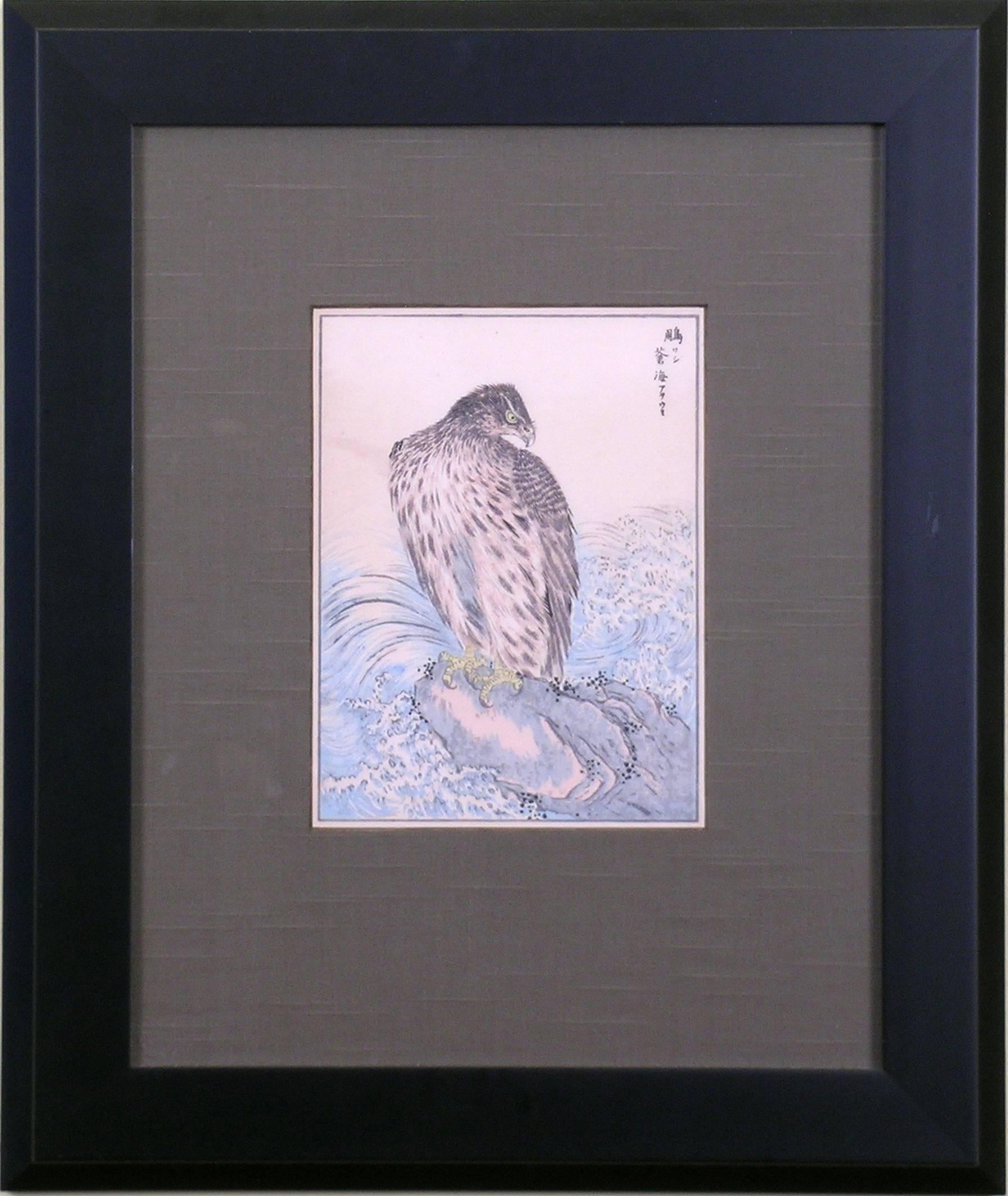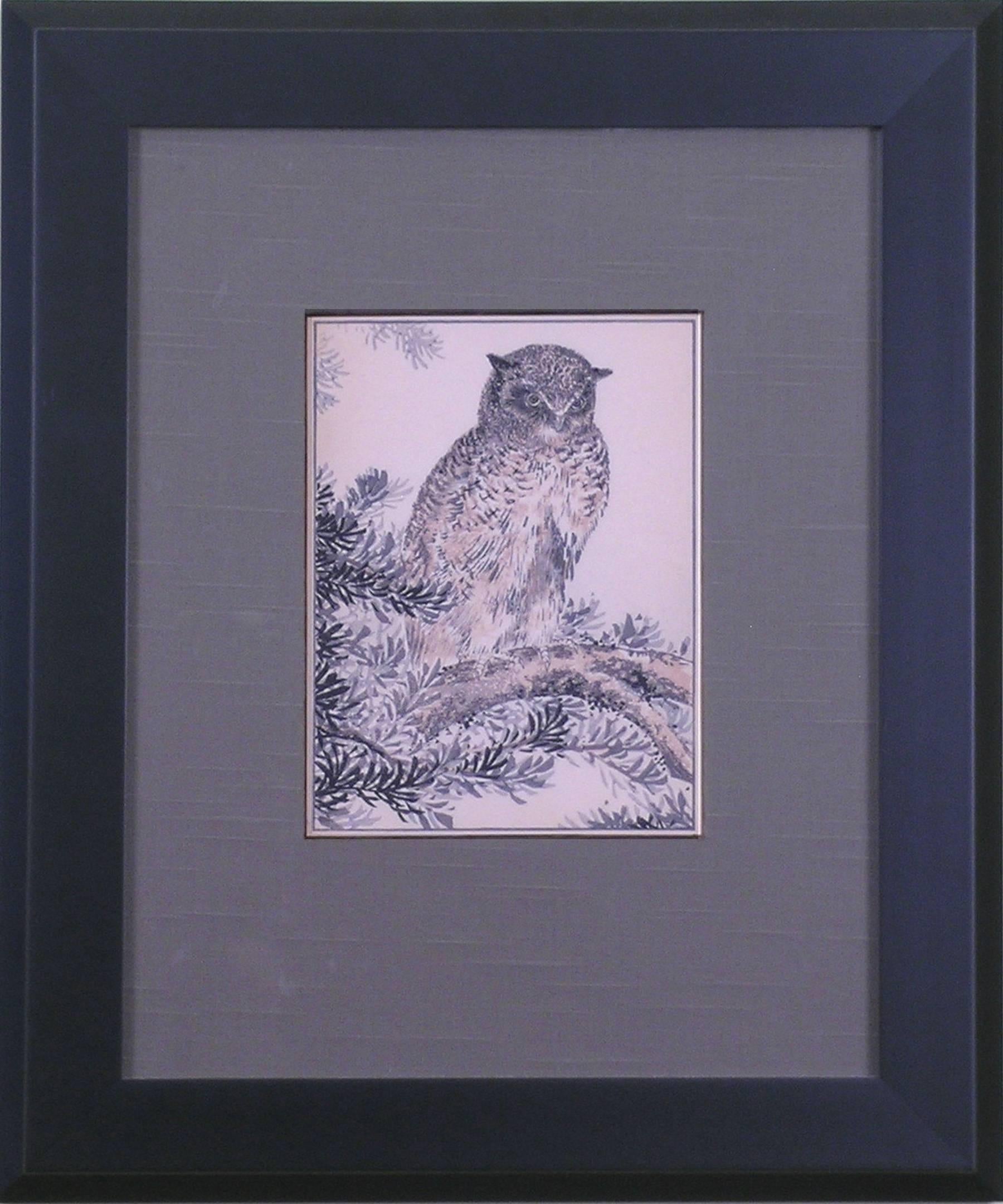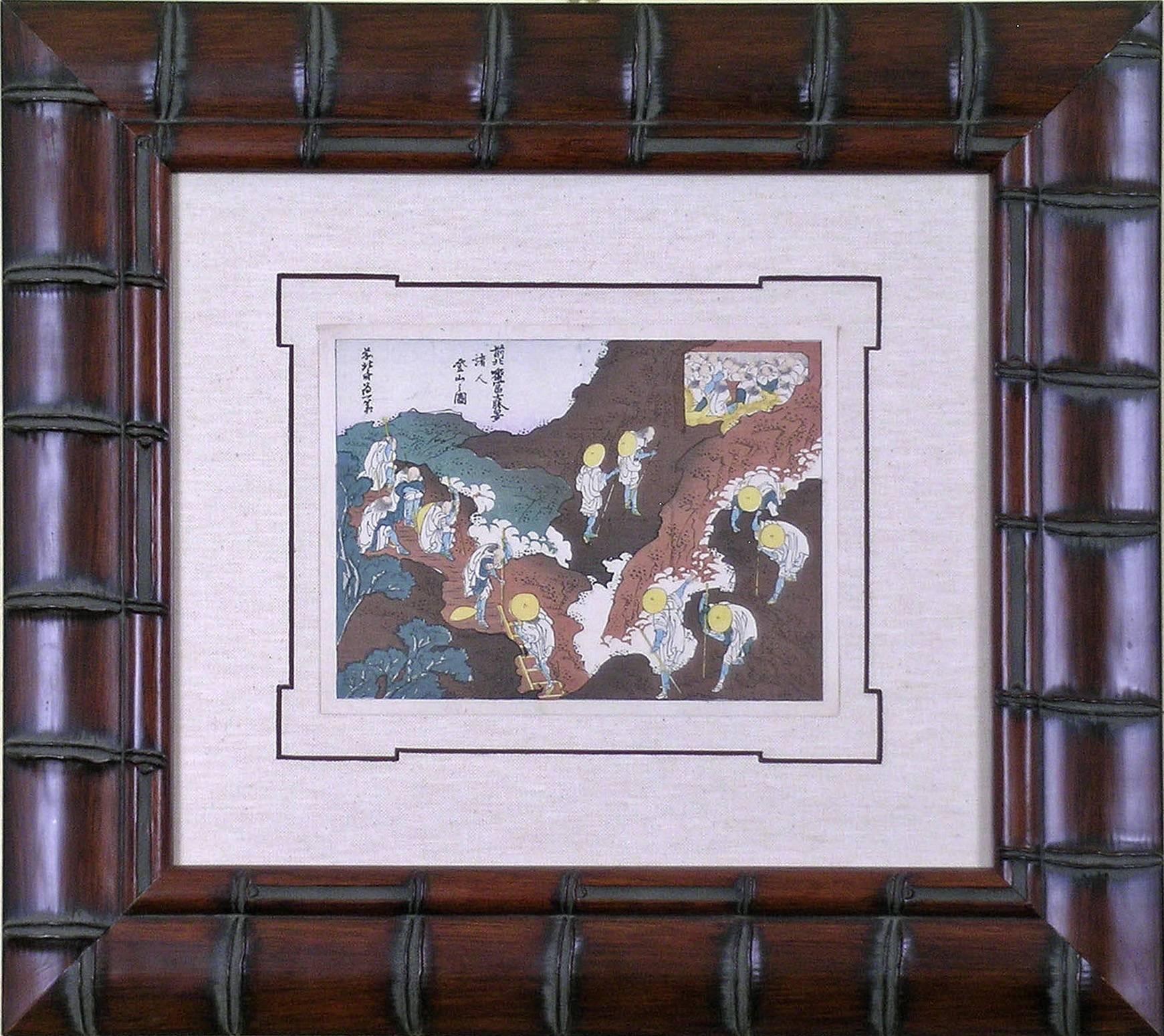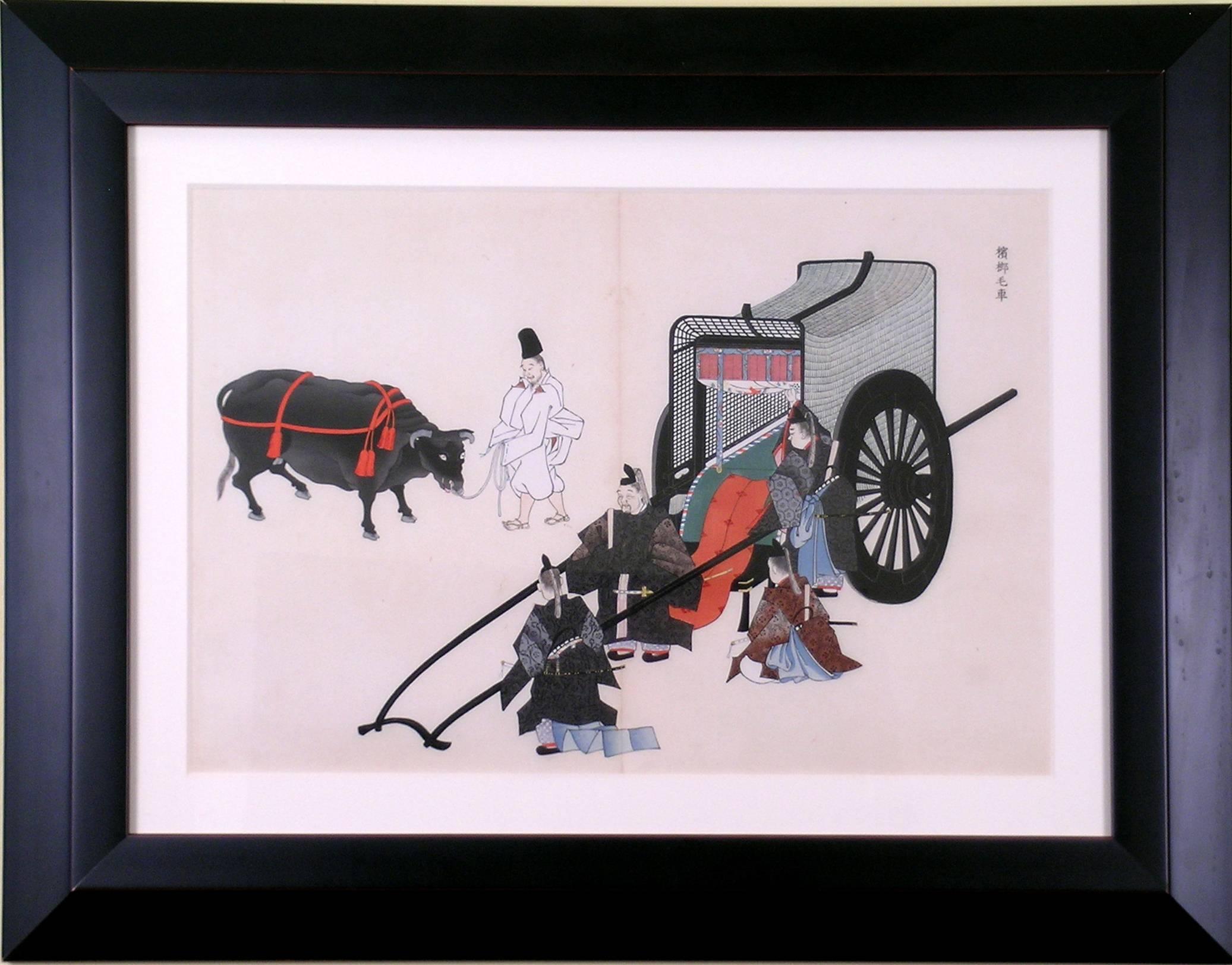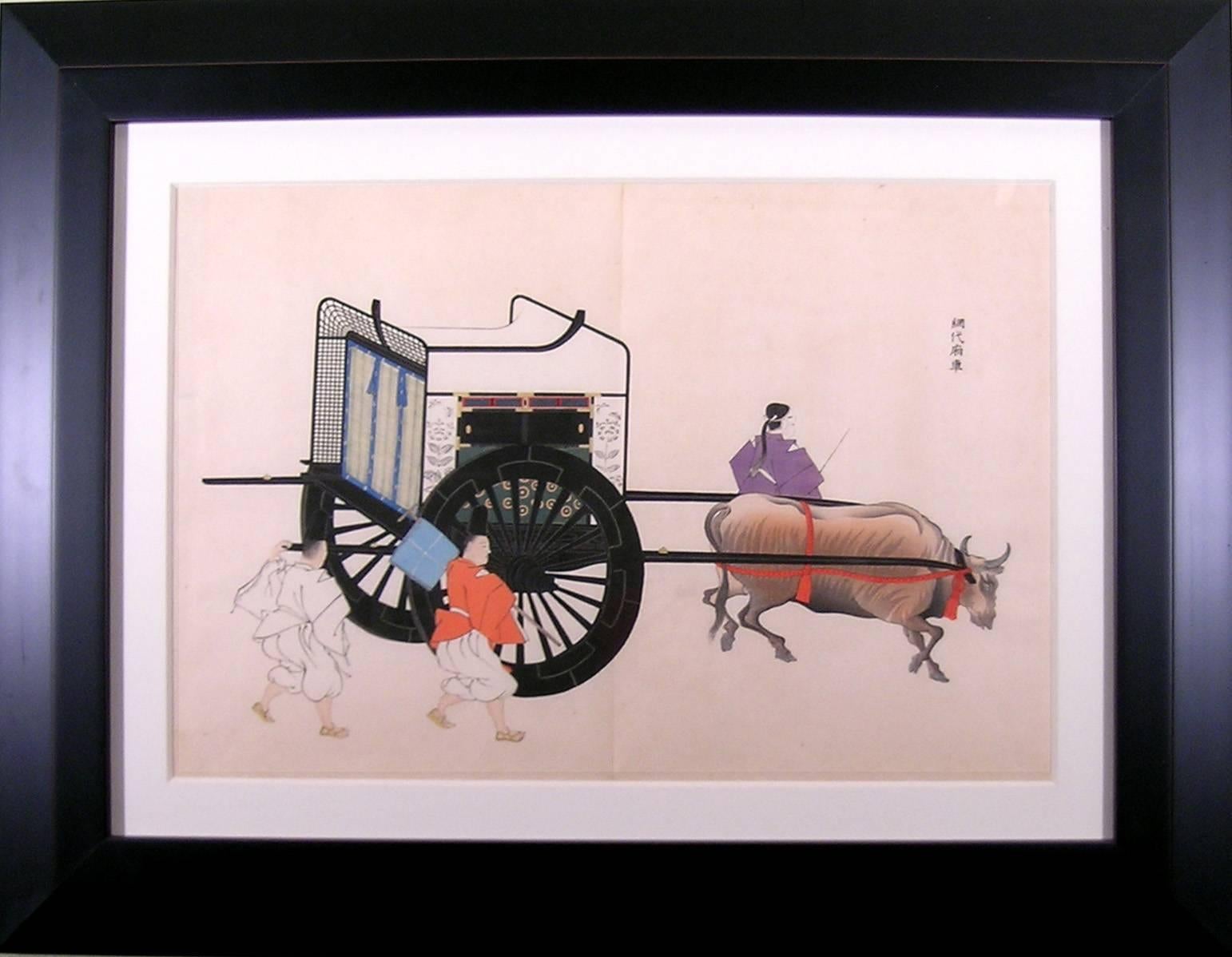Want more images or videos?
Request additional images or videos from the seller
1 of 6
UnknownSamurai: Looking Onca 1900
ca 1900
About the Item
Samurai Warriors
Meji 33 ( 1900)
Woodblocks
Original Hand-Color
Woodblock printing flowered in the Edo Period in Japan, mid to late 19th century, and is still considered an art form of great precision and beauty. This style captures both the vitality and life inherent to the flower. Following the artist’s sketch, an image is carved into a block of wood to be transferred to paper in the same manner in which a painter applies his art to a canvas. Black inks form the outline of the flower and color inks are applied following nature’s guide. The woodblock is then pressed to hand-made screened paper which is then hung to dry. This lengthy process of composing a single image can take weeks. These images reflect a quality similar to watercolor and graphite resulting in a stunning and life-like portrayal.
Samurai were the military nobility of medieval and early-modern Japan. According to translator William Scott Wilson, "In Chinese, the written character was originally a verb meaning to wait upon or accompany persons in the upper ranks of society.” This is also true of the original term in Japanese, saburau. In both countries the terms were nominalized to mean "those who serve in close attendance to the nobility. According to Wilson, an early reference to the word "samurai" appears in the Kokin Washu (905–914), the first imperial anthology of poems, completed in the first part of the 10th century.[1]
By the end of the 12th century, samurai became almost entirely synonymous with bushi, and the word was closely associated with the middle and upper echelons of the warrior class. The samurai followed a set of rules that came to be known as bushido. While the samurai numbered less than 10% of Japan's population,[2] their teachings can still be found today in both everyday life and in modern Japanese martial arts.
- Creation Year:ca 1900
- Dimensions:Height: 17 in (43.18 cm)Width: 19.5 in (49.53 cm)
- Medium:
- Movement & Style:
- Period:
- Condition:Framed to museum specifications using archival matting, backing, hinging. Hand-cut decorative mat opening. Hand-painted decorative mat opening. Glazed with ultra-violet filtering Plexiglas.
- Gallery Location:Florham Park, NJ
- Reference Number:
About the Seller
5.0
Vetted Seller
These experienced sellers undergo a comprehensive evaluation by our team of in-house experts.
1stDibs seller since 2014
161 sales on 1stDibs
Typical response time: 2 hours
- ShippingRetrieving quote...Ships From: Florham Park, NJ
- Return PolicyA return for this item may be initiated within 1 day of delivery.
More From This SellerView All
- Red Men's Kimono DesignBy Matsui YuokuLocated in Florham Park, NJREISHIN GACHO (Album of Beautiful Designs) Japanese Kimono Designs Matsui Yuoku, Painter Japan, 1900 (Meiji 33) Honda Ichijirou, Publisher Woodblock P...Category
Early 1900s Academic Prints and Multiples
MaterialsWoodcut, Watercolor
- HawkBy Kono BaireiLocated in Florham Park, NJKono Bairei (1844 – 1895) Kacho-ga. (Birds and Flowers) Japan, c1880 Woodblock Print. 15 x 11. Okura Magobei, Publisher. The enthusiasm for nature prints transcends the centuries. “One Hundred Flowers” is a mid-nineteenth century work illustrating varieties of flowers in naturalistic styles. Traditional woodblock printing enhances the beauty of each work. The artist must carve different woodblocks for every color he wishes to transfer to paper. In this style of printing it is imperative that the register of each woodblock be exact as they must match perfectly to create an image without blurring. In addition to his illustrated flower books...Category
Late 19th Century Academic Prints and Multiples
MaterialsWoodcut, Watercolor
- OwlBy Kono BaireiLocated in Florham Park, NJKono Bairei (1844 – 1895) Kacho-ga. (Birds and Flowers) Japan, c1880 Woodblock Print. Okura Magobei, Publisher. The enthusiasm for nature prints transcends the centuries. “One Hundred Flowers” is a mid-nineteenth century work illustrating varieties of flowers in naturalistic styles. Traditional woodblock printing enhances the beauty of each work. The artist must carve different woodblocks for every color he wishes to transfer to paper. In this style of printing it is imperative that the register of each woodblock be exact as they must match perfectly to create an image without blurring. In addition to his illustrated flower books...Category
Late 19th Century Academic Prints and Multiples
MaterialsWoodcut, Watercolor
- Men on the MountainBy Katsushika HokusaiLocated in Florham Park, NJFUGAKU HYAKKEI Views of Mt. Fuji Katsushika Hokusai (1760-1849) Woodblock Print 1834-5 Edo period It signifies the long history and the aspirations of the race; it is a token ...Category
Mid-19th Century Academic Prints and Multiples
MaterialsWoodcut, Watercolor
- Oxcart with 5 Men and 1 OxBy Yosha Zuko FuzuLocated in Florham Park, NJYosha Zuko Fuzu Meiji 33 (1900) Woodblock with Original Hand-Coloring Writer: Kosugi Onson, Imaizumi Teisuke Publisher: Yoshikawa Hanshichi The Japanese litters and palanquins...Category
Early 1900s Academic Figurative Prints
MaterialsWoodcut, Watercolor
- Oxcart with 3 MenBy Yosha Zuko FuzuLocated in Florham Park, NJYosha Zuko Fuzu Meiji 33 (1900) Woodblock with Original Hand-Coloring Writer: Kosugi Onson, Imaizumi Teisuke Publisher: Yoshikawa Hanshichi The Japanese litters and palanquins...Category
Early 1900s Academic Figurative Prints
MaterialsWoodcut, Watercolor
You May Also Like
- Louis I of France as a Roman Emperor, in profile to the rightBy Christoffel JegherLocated in Fairlawn, OHLouis I of France as a Roman Emperor, in profile to the right Chiaroscuro woodcut, 1631-1633 Unsigned (as usual) After a drawing by Hubert Goltzius (1526-1583)...Category
17th Century Academic Portrait Prints
MaterialsWoodcut, ABS
- Greek Architecture Blueprint of Ancient Amphitheatre Cyanotype Print, WatercolorBy Kind of CyanLocated in Barcelona, ESThis is an exclusive handprinted limited edition cyanotype. Details: + Title: Ancient Roman Amphitheater + Year: 2022 + Edition Size: 50 + Stamped and Certificate of Authenticity provided + Measurements : 70x100 cm (28x 40 in.), a standard frame size + All cyanotype prints...Category
2010s Academic Still-life Photography
MaterialsPhotographic Film, Woodcut, Emulsion, Watercolor, C Print, Color, Lithog...
- Tetbury Church - Signed Lithograph, Royal Art, Royal Heritage, Cotswolds, BritishLocated in Knowle Lane, CranleighTetbury Church by His Majesty King Charles III - Hand Signed Limited Edition Lithograph. Belgravia Gallery has been honoured to be associated with ...Category
1990s Academic Landscape Prints
MaterialsLithograph
- Overlooking Wadi, Saudi Arabia - Signed Lithograph, Royal Art, Mountains, AsirLocated in Knowle Lane, CranleighOverlooking Wadi, Asir Province, Kingdom Of Saudi Arabia by His Majesty King Charles III, (created when he was HRH The Prince of Wales) - ...Category
Early 2000s Academic Landscape Prints
MaterialsLithograph
- Windsor Castle - Signed Lithograph, Royal Art, Royal Homes, Windsor Castle, BritishLocated in Knowle Lane, CranleighWindsor Castle by HM King Charles III - Hand Signed Limited Edition Lithograph. Belgravia Gallery has been honoured to be associated with the artwo...Category
1990s Academic Landscape Prints
MaterialsLithograph
- Hong Kong from HMY Britannia - Signed Lithograph, Royal Art, Union Jack,Located in Knowle Lane, CranleighHong Kong From HMY Britannia by HM King Charles III - Hand Signed Limited Edition Lithograph. Belgravia Gallery has been honoured to be associated ...Category
Early 2000s Academic Landscape Prints
MaterialsLithograph
Recently Viewed
View AllMore Ways To Browse
Antique Looking
Antique Look
Look 1
Antique Wood Look
Antique Looking Wood
Antique Looking Flowers
Antique Flower Prints Art Prints
Japanese Samurai
Japan Samurai
Chinese Ink Prints
Chinese Prints Set
Samurai Art
Flower Prints On Canvas
Antique Print Block
Japanese Samurai Art
Japanese Block Prints
Japaneses Block Print
Warrior Prints

